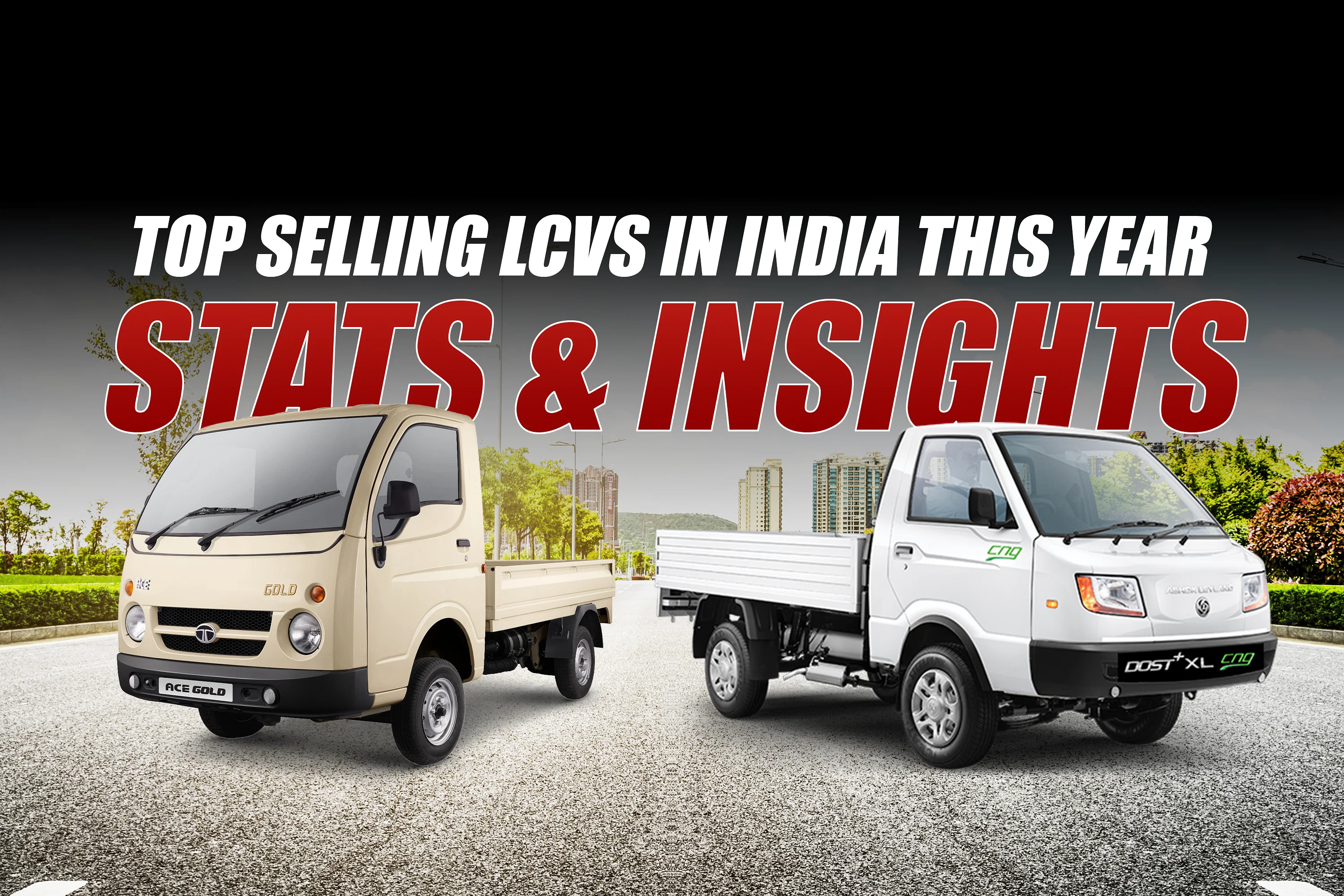India's economic action is on wheels, and much of the time, it's the Light Commercial Vehicle that is responsible for keeping the wheels rolling. In congested city streets where space is at a premium, or in rural areas where roads become thin and uneven, LCVs form the backbone of local logistics. In 2025, their importance has only increased. While the established players have strengthened their control through upgrades, new players have introduced a new level of competitiveness, redefining business owners' and fleet operators' choices.
What constitutes an LCV?
A light commercial vehicle, in definition, is any goods-carrying vehicle with a gross vehicle weight (GVW) not exceeding 7.5 tonnes. Such vehicles are designed to carry light loads for distances ranging from short to moderate. Their advantage is fuel efficiency, small dimensions, and lower operating cost, important parameters for last-mile delivery and semi-urban transport.
Small firms, online shopping websites, kirana store owners, and even farmers are attracted to LCVs due to their combination of utility and economy. They're not payload-centric; they're reach-centric, agility-centric, and viability-centric.
What's Propelling LCV Sales in 2025?
The year has seen unequivocal momentum. E-commerce has gone further to penetrate tier-2 and tier-3 cities, requiring trusted last-mile logistics. Urban infrastructure developments have pushed commercial activity upward. Moreover, with credit schemes with the backing of the government and promoting MSME upliftment, LCV ownership has been made more affordable.
Producers have reacted by producing vehicles with improved mileage, simpler financing, and cleaner fuel. LCVs in some sense are the middle point between overburdened two-wheelers and under-loaded heavy-duty trucks.
Best-Selling LCVs in 2025
1. Tata Ace Gold
- GVW: 1835 kg
- Fuel Options: Petrol, Diesel, CNG
- Price Range: ₹4.2 – ₹6.5 lakh
Tata's Ace Gold continues to be a favorite. It's the comfortable option for intra-city micro-distributors in cities. The company's vast service network and robust resale value ensure confidence. Interestingly, its volume increased by 12% in eastern states this year, indicative of renewed interest in affordable intra-city mobility.

2. Mahindra Supro Profit Truck
- GVW: 1050 kg
- Fuel Options: Diesel, CNG
- Price Range: ₹5.4 – ₹6.3 lakh
A strong performer in the first-time buyer segment, the Mahindra Supro is both compact and economical. It's a familiar sight on the roads of small-scale enterprises, florists, traders, electronics stores. In just the first six months of 2025, more than 25,000 units were sold, controlling the market in western and central India.

3. Ashok Leyland Dost+
- GVW: 2905 kg
- Fuel Option: Diesel
- Price Range: ₹7.8 – ₹8.5 lakh
The Ashok Leyland Dost+ is an upgrade, for those who carry more, travel more, and like strength over simplicity. It's widely popular in southern India, where financing schemes and cooperative transport societies helped its sales jump by 18% in Q2.

4. Maruti Suzuki Super Carry
- GVW: 1620 kg
- Fuel Options: Petrol, CNG
- Price Range: ₹5.2 – ₹6.0 lakh
While Maruti’s name isn’t often associated with trucks, the Maruti Suzuki Super Carry has carved out its niche. With high fuel savings and a CNG variant gaining popularity in pollution-conscious markets like Delhi NCR and Gujarat, it’s a practical pick.

5. Tata Intra V30
- GVW: 2565 kg
- Fuel Option: Diesel
- Price Range: ₹8.3 – ₹9.4 lakh
Tata Intra V30 is designed for scale-up. With a larger cargo deck and enhanced driver comfort, it's a hit with logistics aggregators and pharma distributors. Mid-tier cities like Lucknow and Nagpur reported a 15% increase in sales early this year.

LCV Price Snapshot – 2025
Here is a brief LCV price comparison in India, covering fuel types and GVW ratings:
| Model | Fuel Type | GVW (Kgs) | Price (₹, Ex-showroom) |
| Tata Ace Gold | Petrol/CNG/Diesel | 1835 | ₹4.2 – ₹6.5 lakh |
| Mahindra Supro | Diesel/CNG | 1050 | ₹5.4 – ₹6.3 lakh |
| Ashok Leyland Dost+ | Diesel | 2905 | ₹7.8 – ₹8.5 lakh |
| Maruti Super Carry | Petrol/CNG | 1620 | ₹5.2 – ₹6.0 lakh |
| Tata Intra V30 | Diesel | 2565 | ₹8.3 – ₹9.4 lakh |
These trucks come with varying load weights and engine sizes, enabling customers to choose depending on the route, load type, and available fuel.
Growing Trends in the LCV Market
Electrification Picks Up Pace
Electric LCVs are no longer paper-only. Grocery delivery companies and dairy chains are testing small electric pickups in city routes. While the range issues persist, the shift has obviously commenced.
Smart Fleets Become the New Standard
Fuel consumption, driving behavior, and route performance are now monitored in real time by operators. Vehicles with inbuilt telematics and fleet management solutions are finding growing demand.
Ownership Models Are Evolving
Flexible EMI schemes, leasing alternatives, and short-term rentals are assisting technology-driven logistics startups in onboarding LCVs without capital burden at the outset.
Final Thoughts
LCVs in India are not just commercial vehicles, LCVs are business facilitators. They transport goods, sure, but more significantly, they transport possibilities. From Tata's eternally green Ace to Mahindra's agile Supro and the robust Dost+, each is unique in what it has to offer. They thrive not by being all things to all people but by being exactly what a person requires.
In 2025, as connectivity intensifies and enterprise goes big, the ideal LCV can be the difference between success and failure. And as the market continues evolving, flexibility, just like these vehicles themselves, will be the determining factor.
For more articles and news, stay updated with 91trucks. Subscribe to our YouTube channel and follow us on Facebook, Instagram, and LinkedIn for the latest videos and updates from the automotive world!
Read More:
Web Stories
Latest Trucks News
Categories
91trucks is a rapidly growing digital platform that offers the latest updates and comprehensive information about the commercial vehicle industry.










